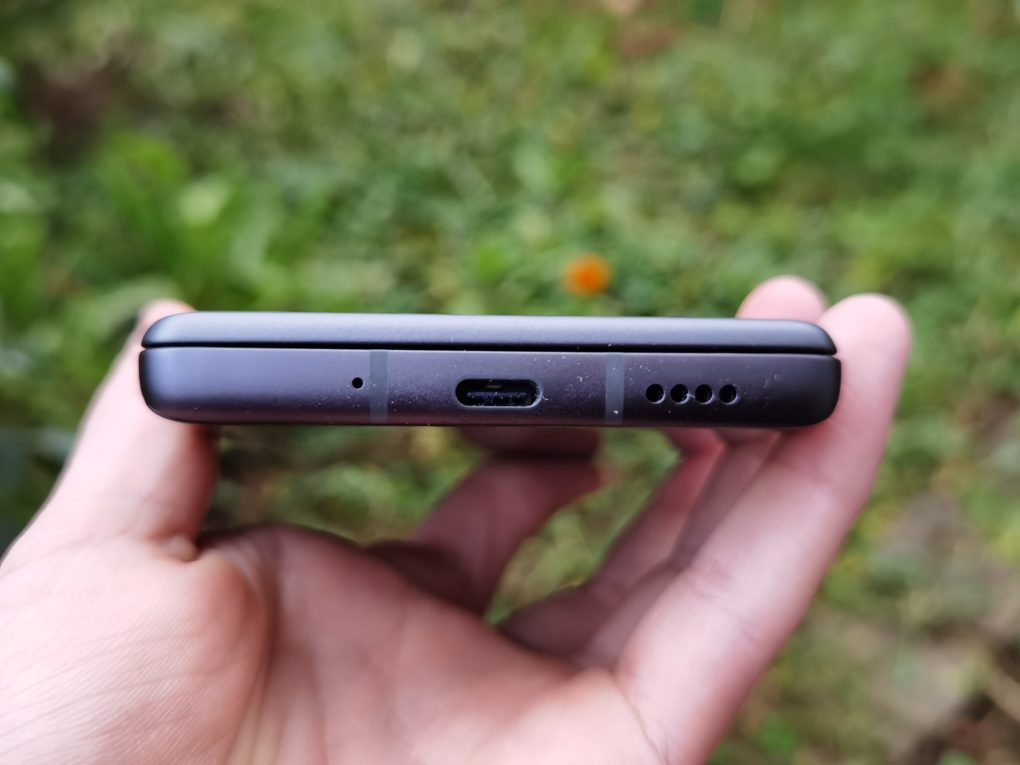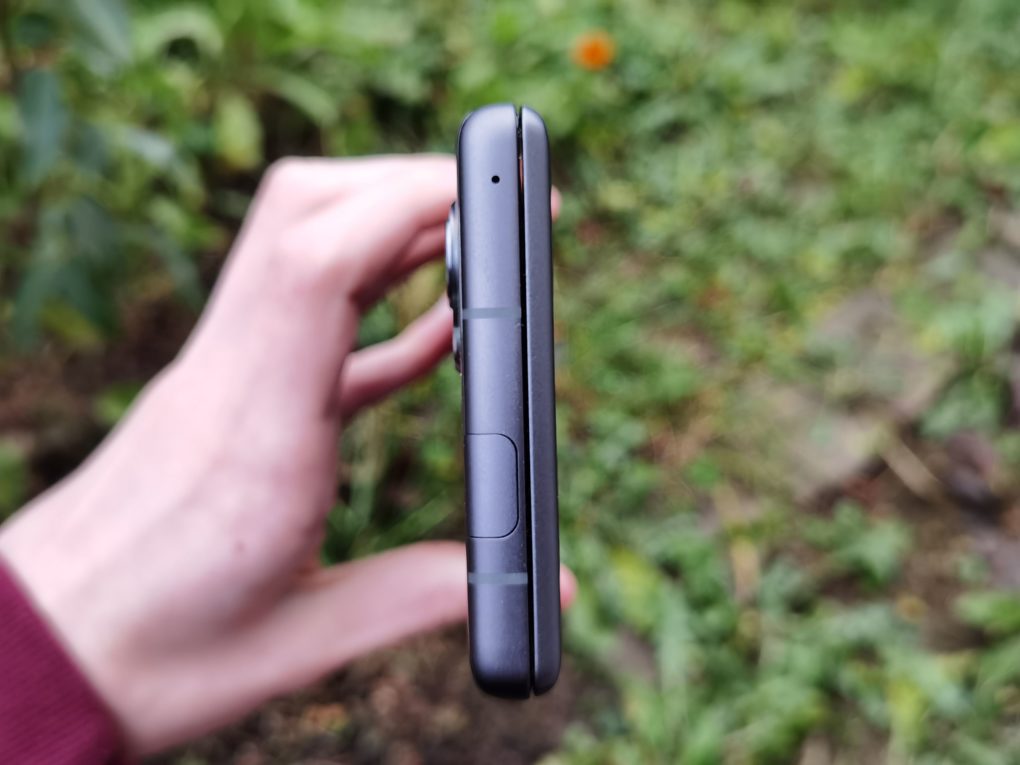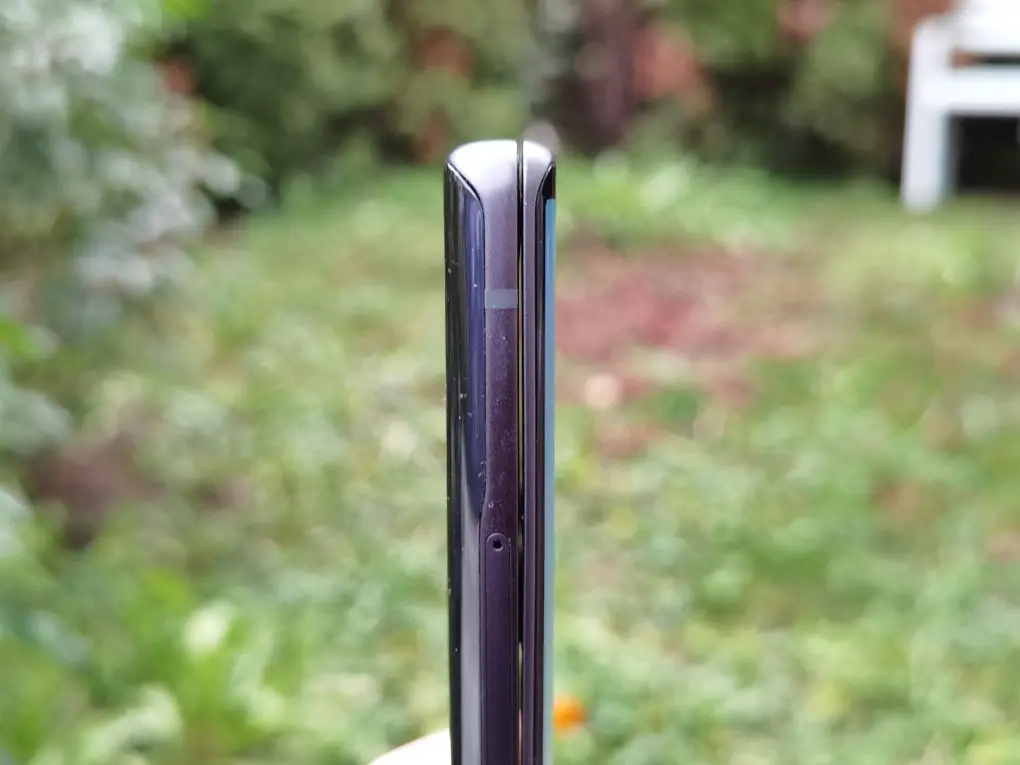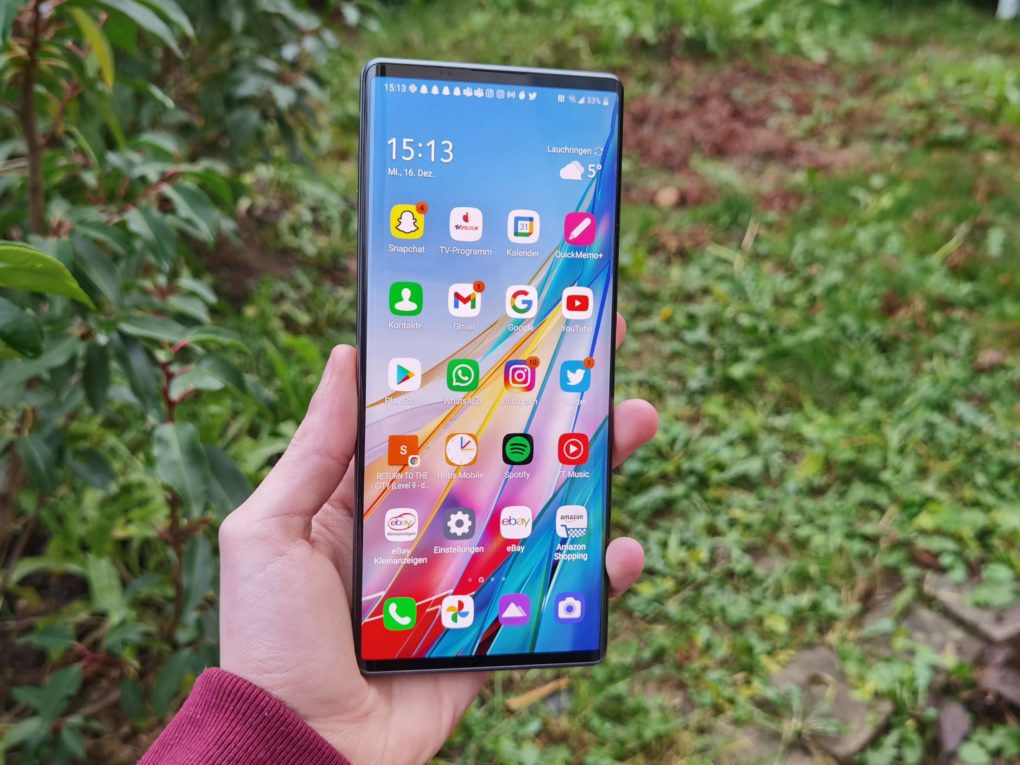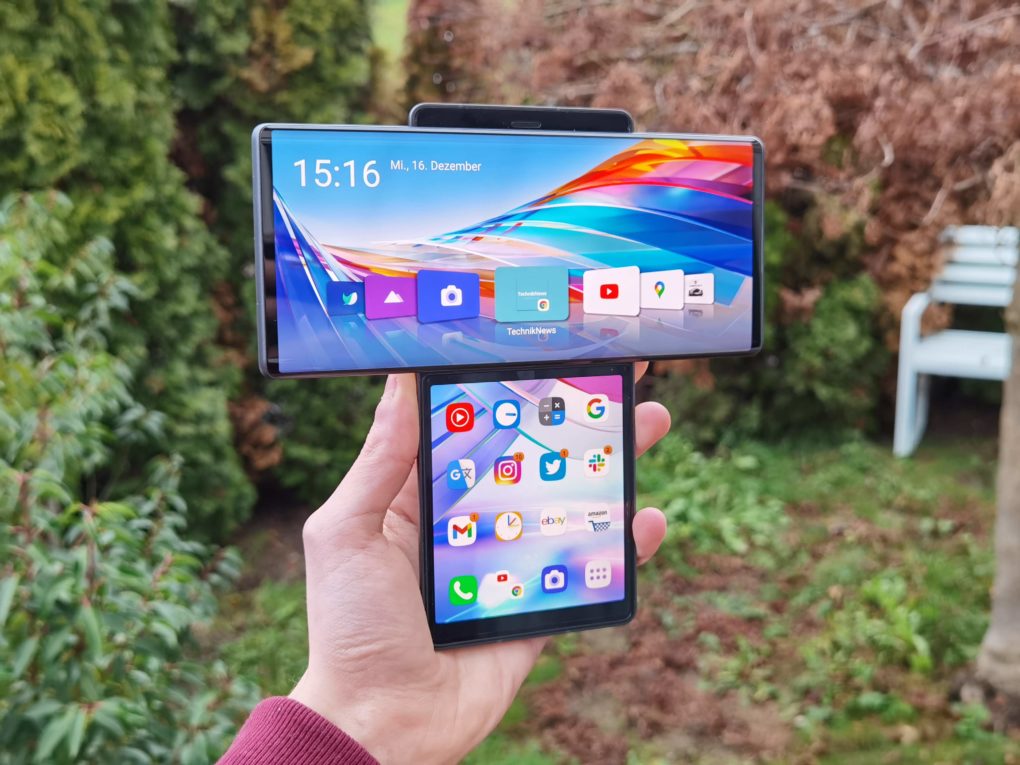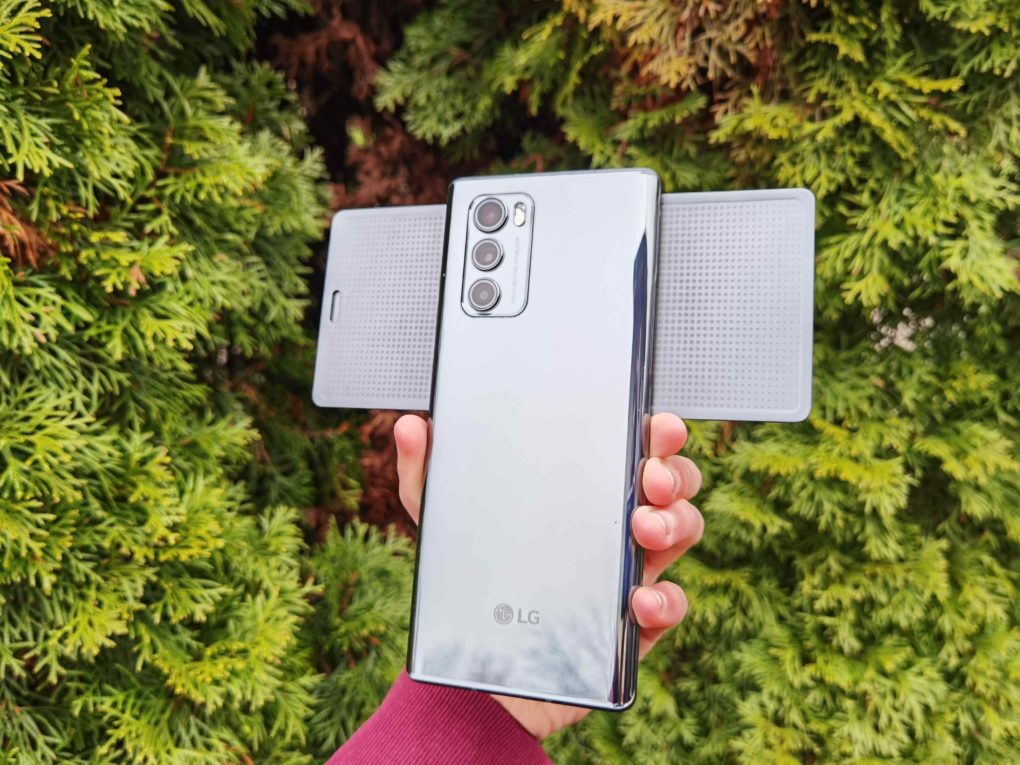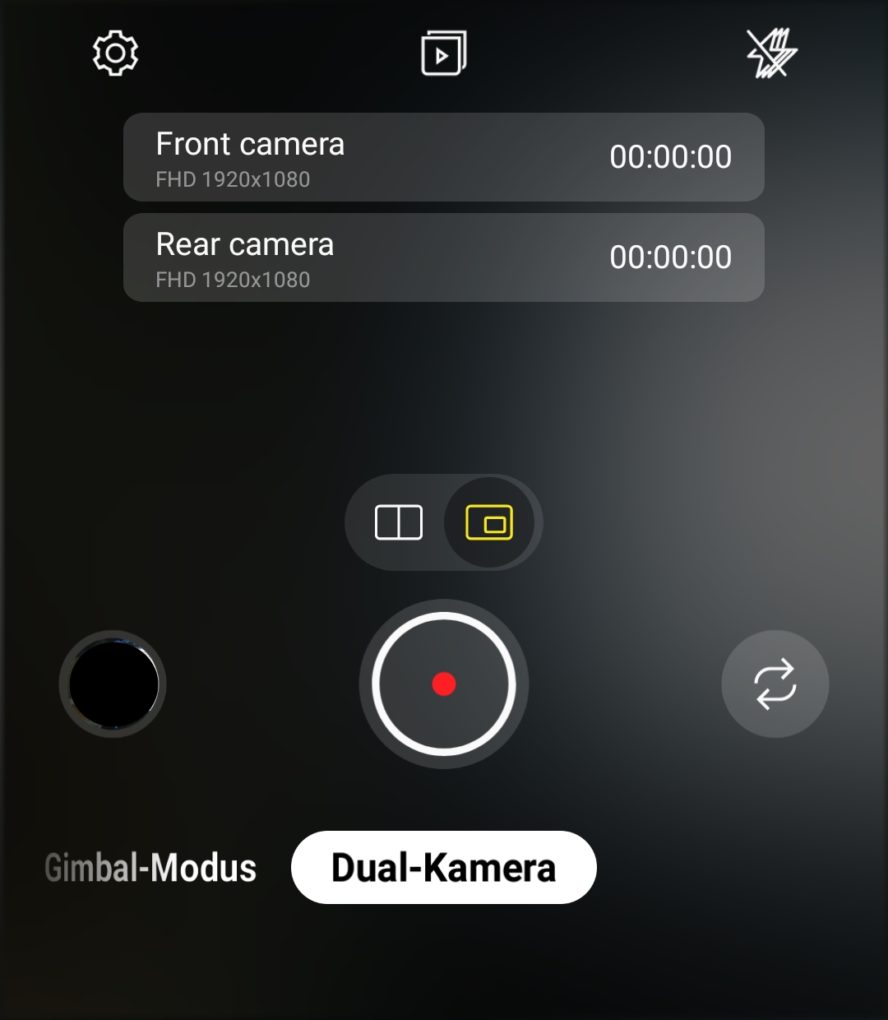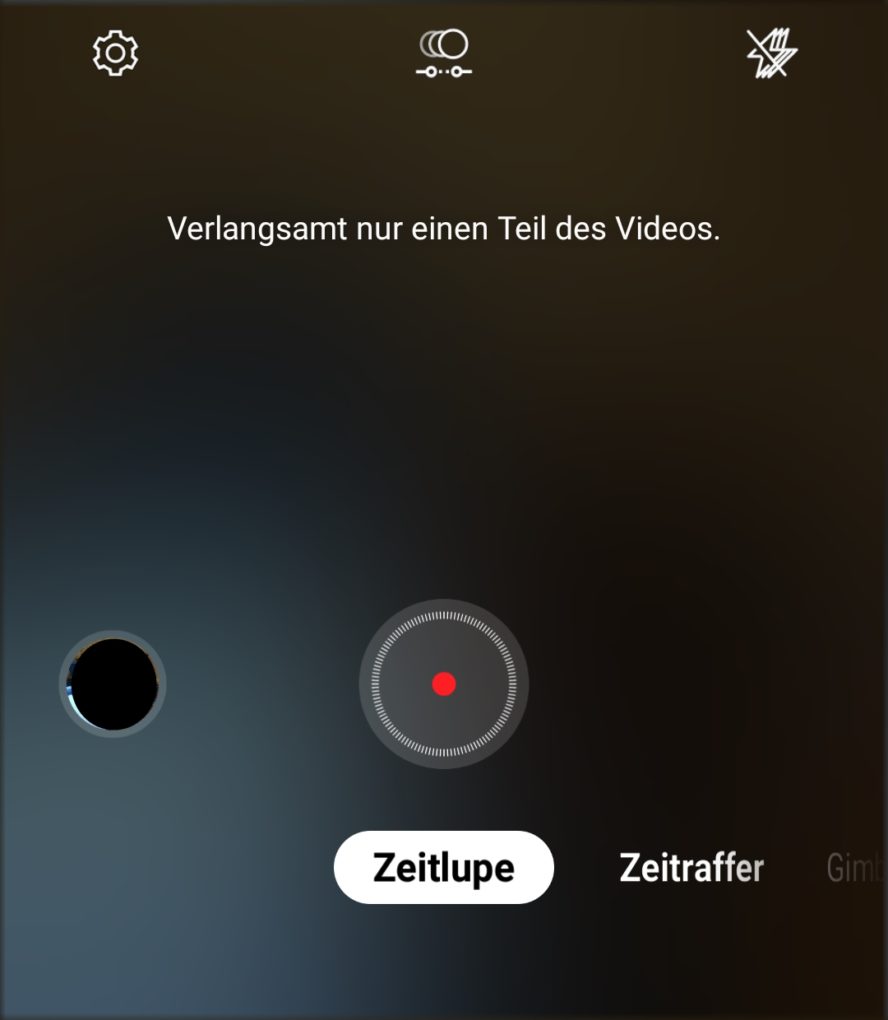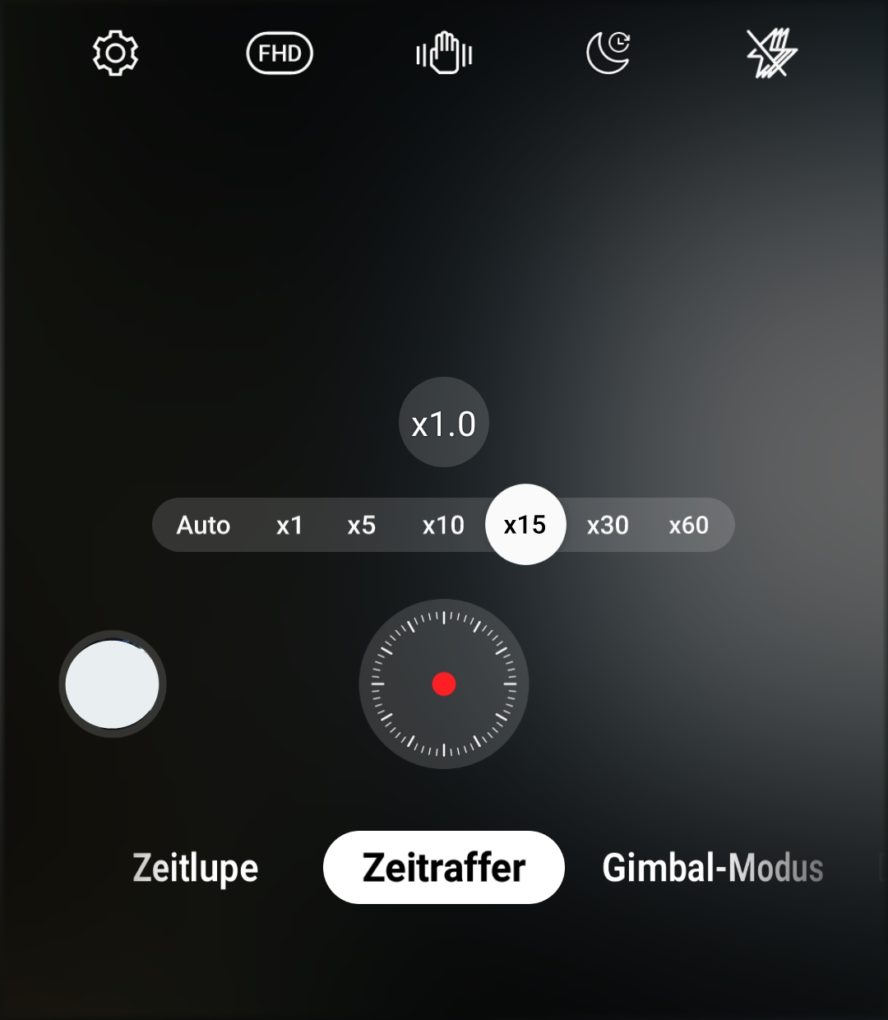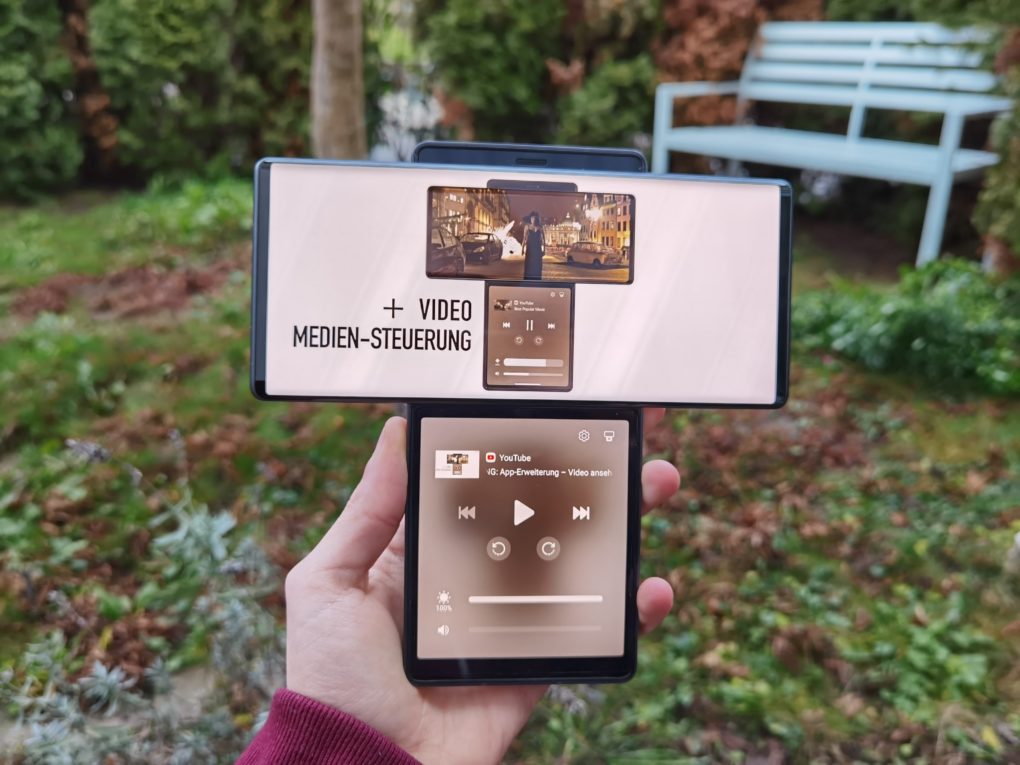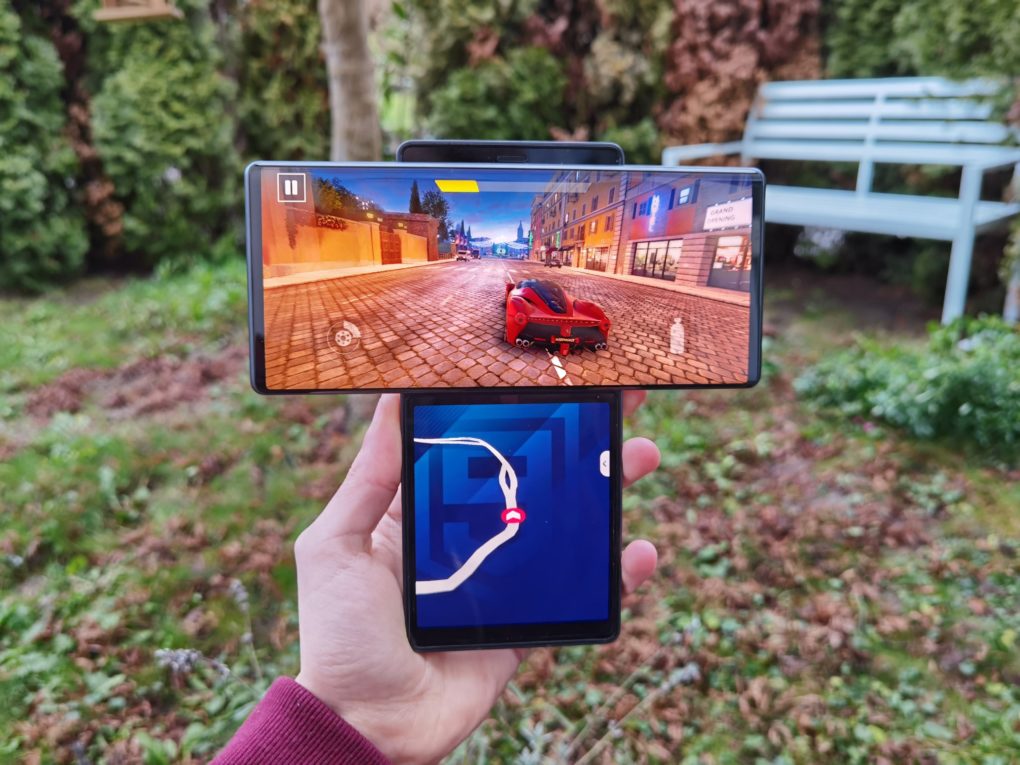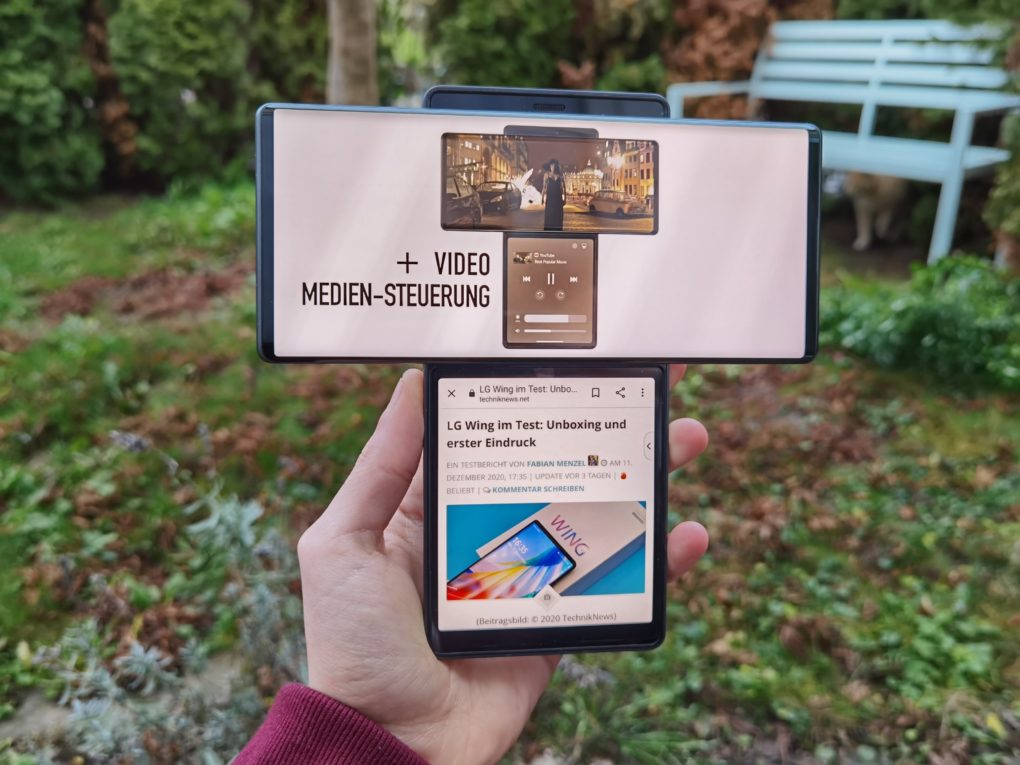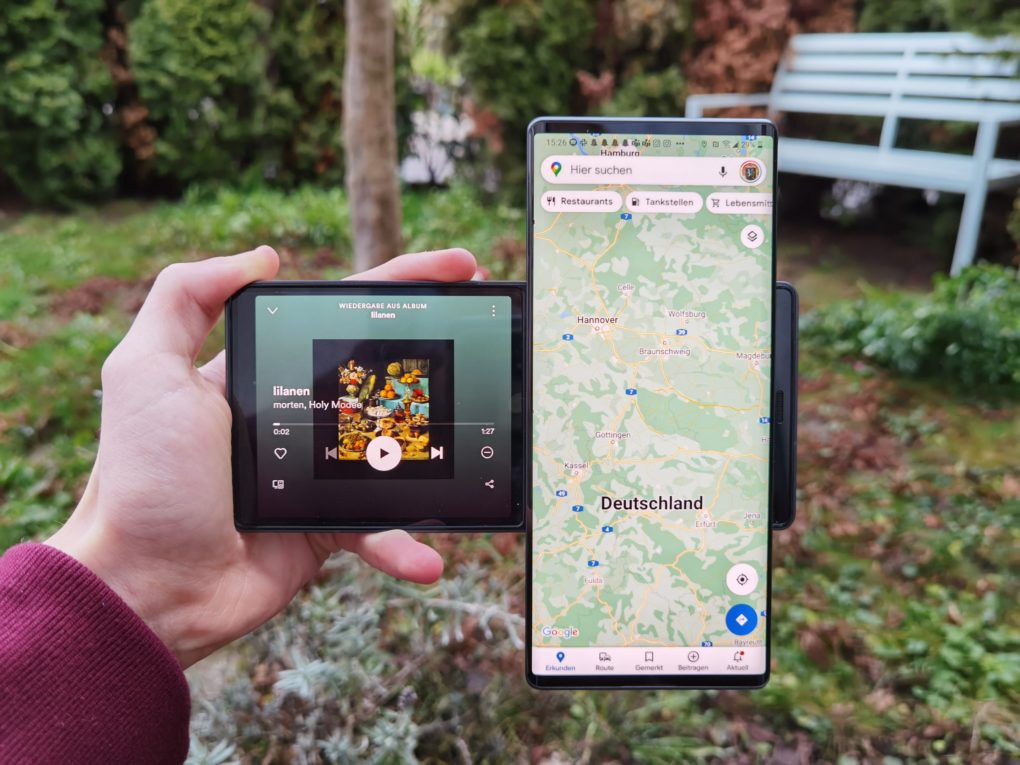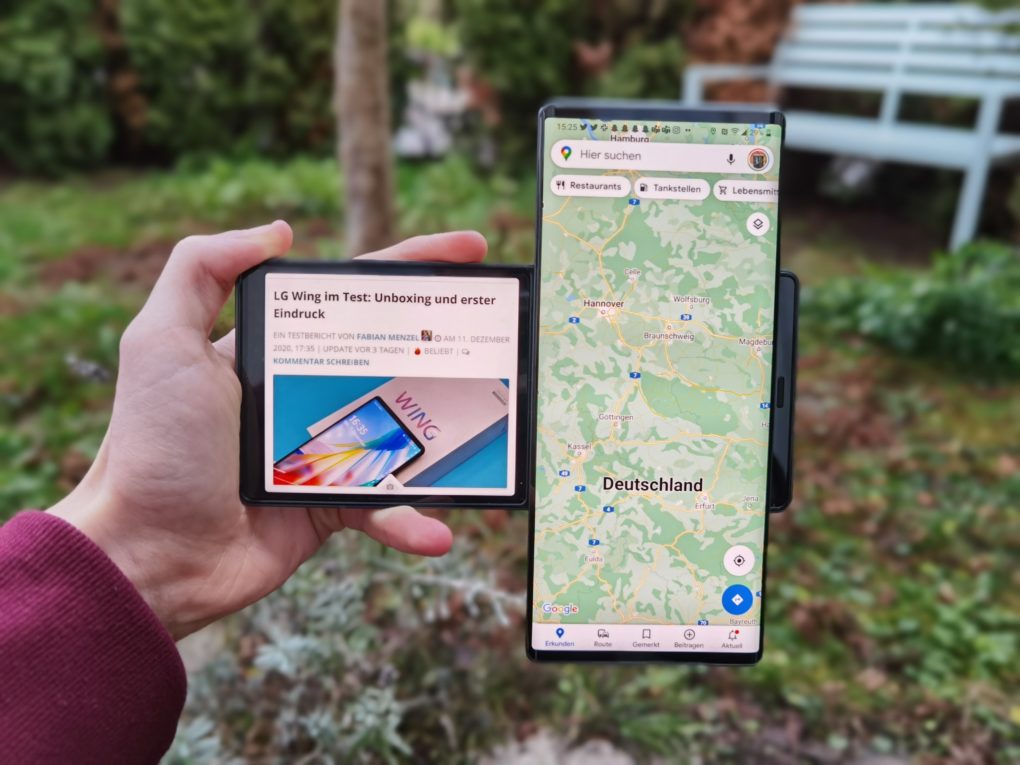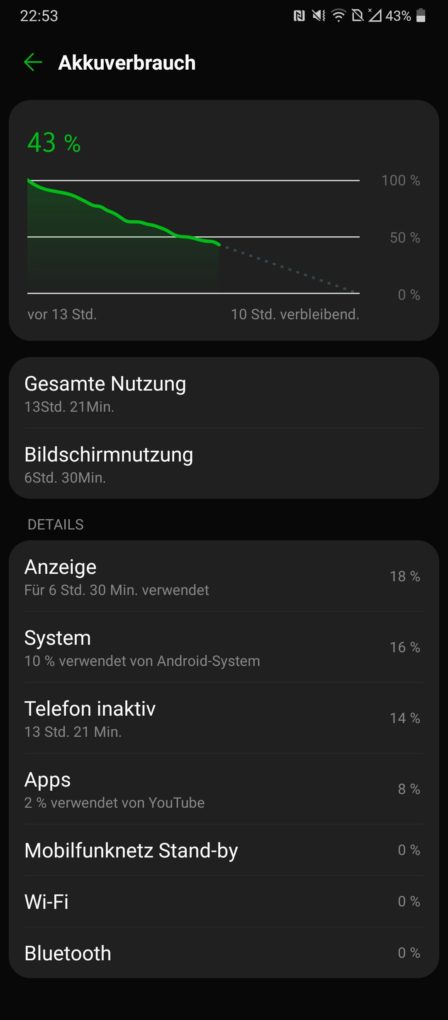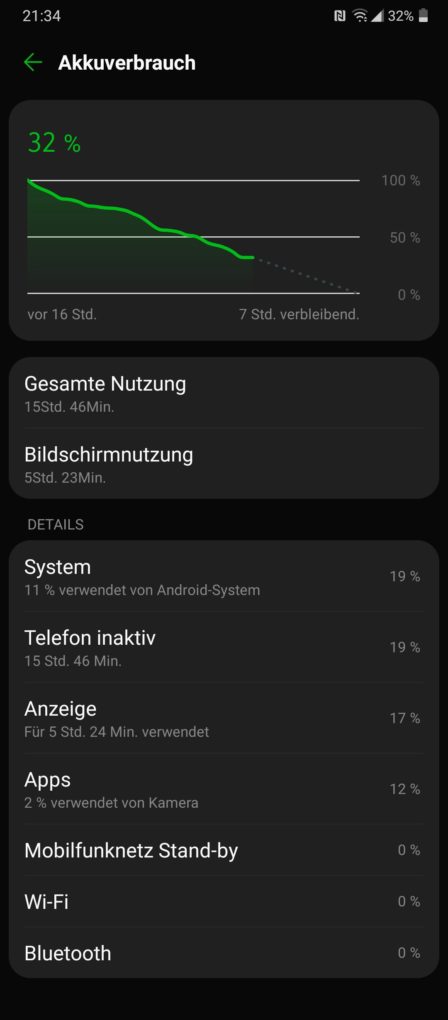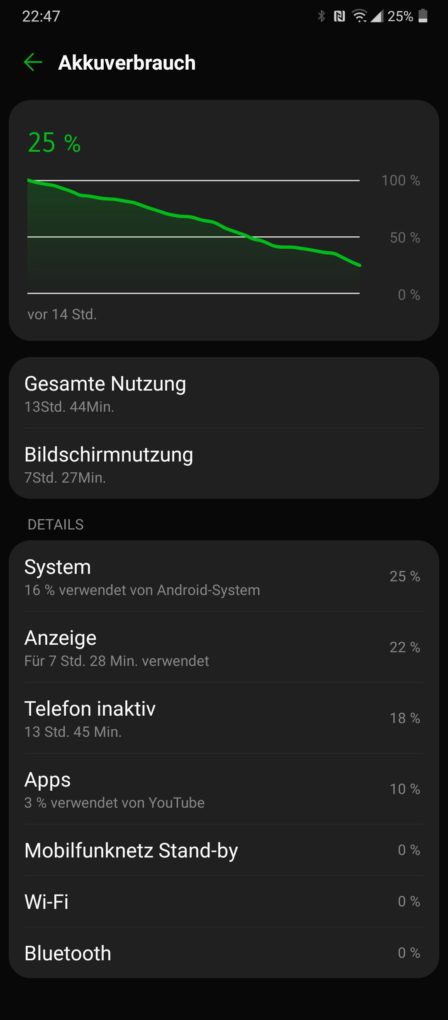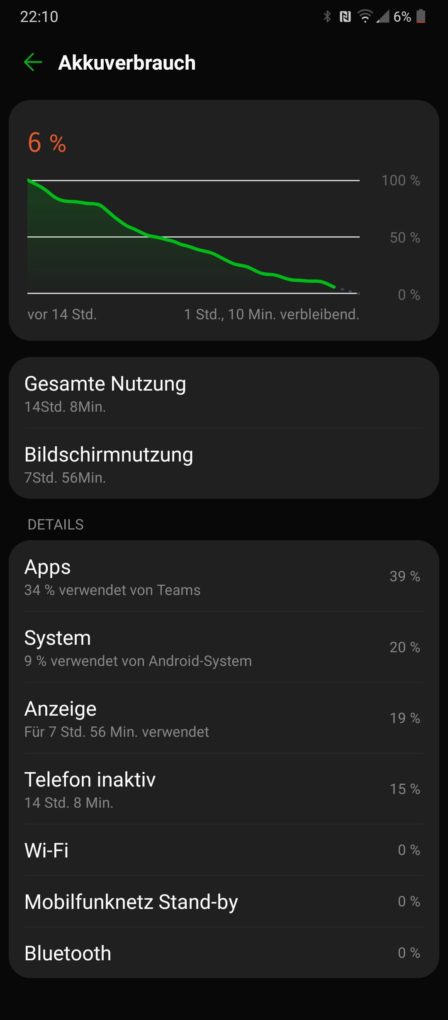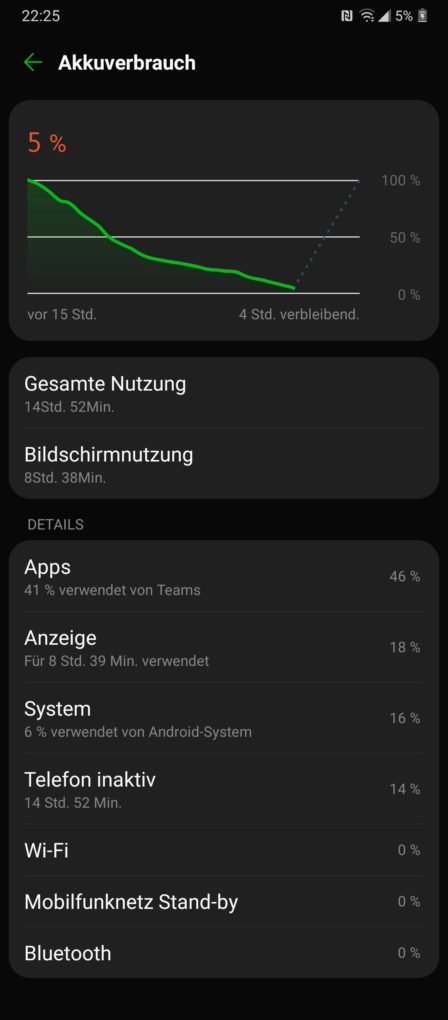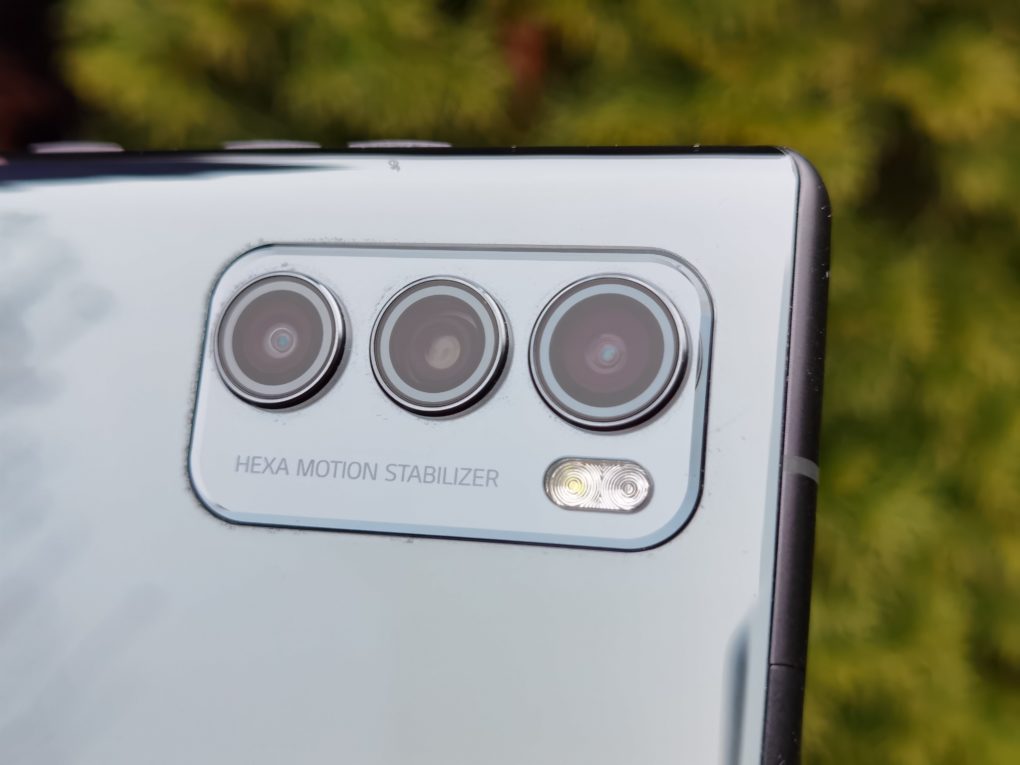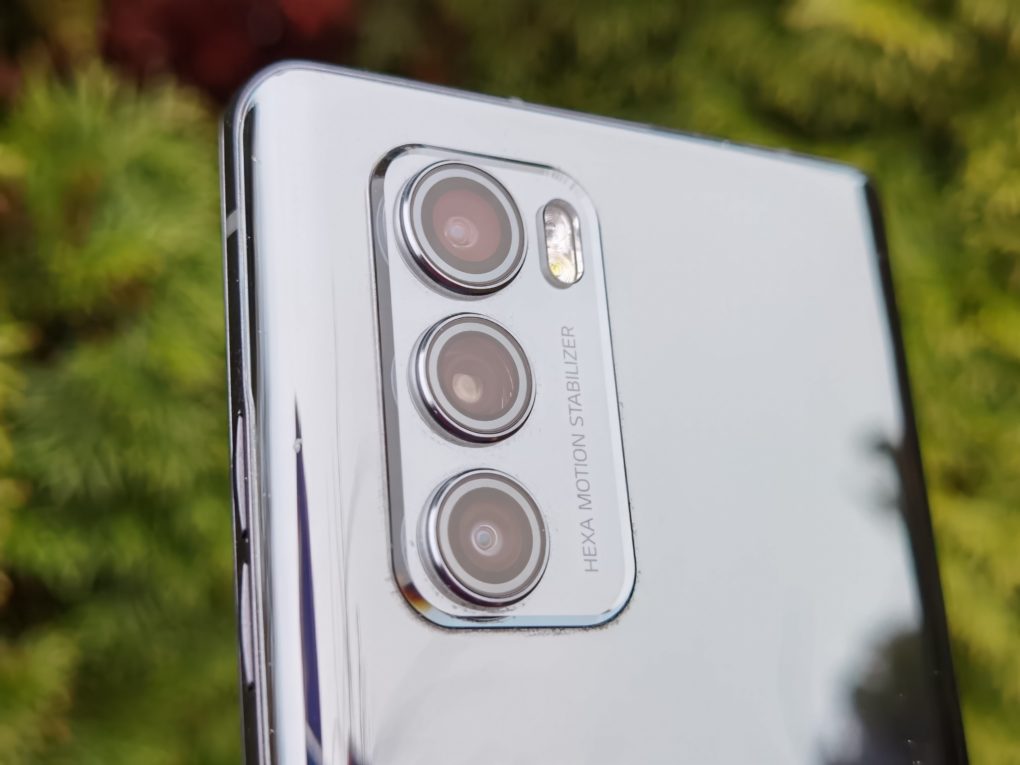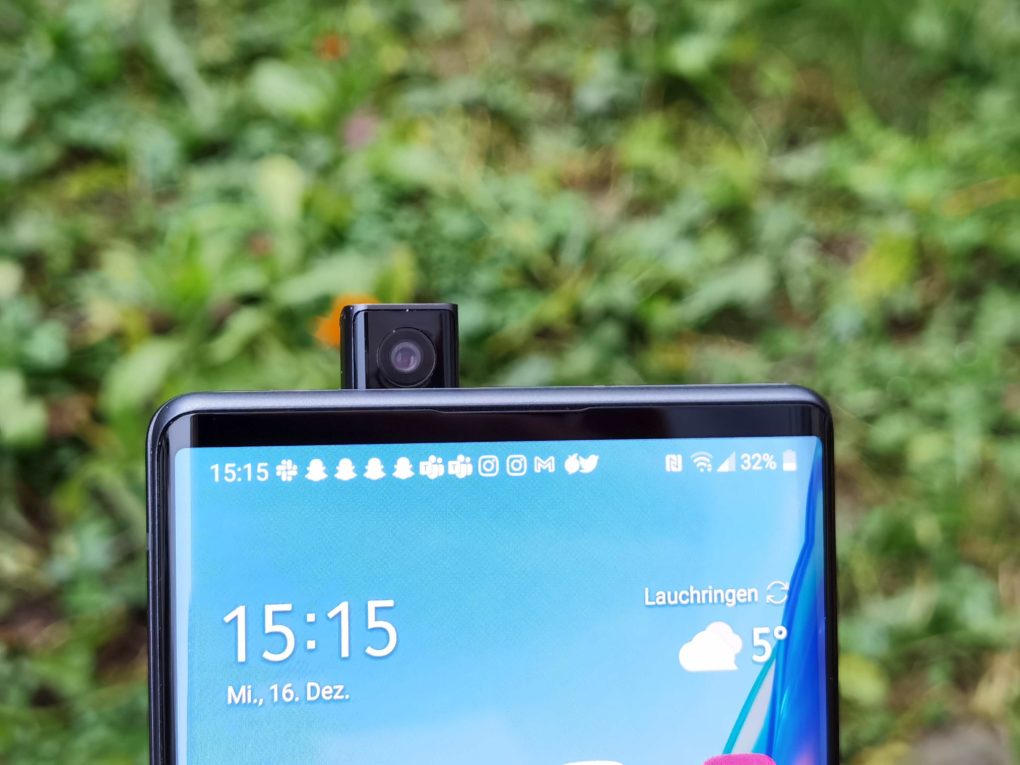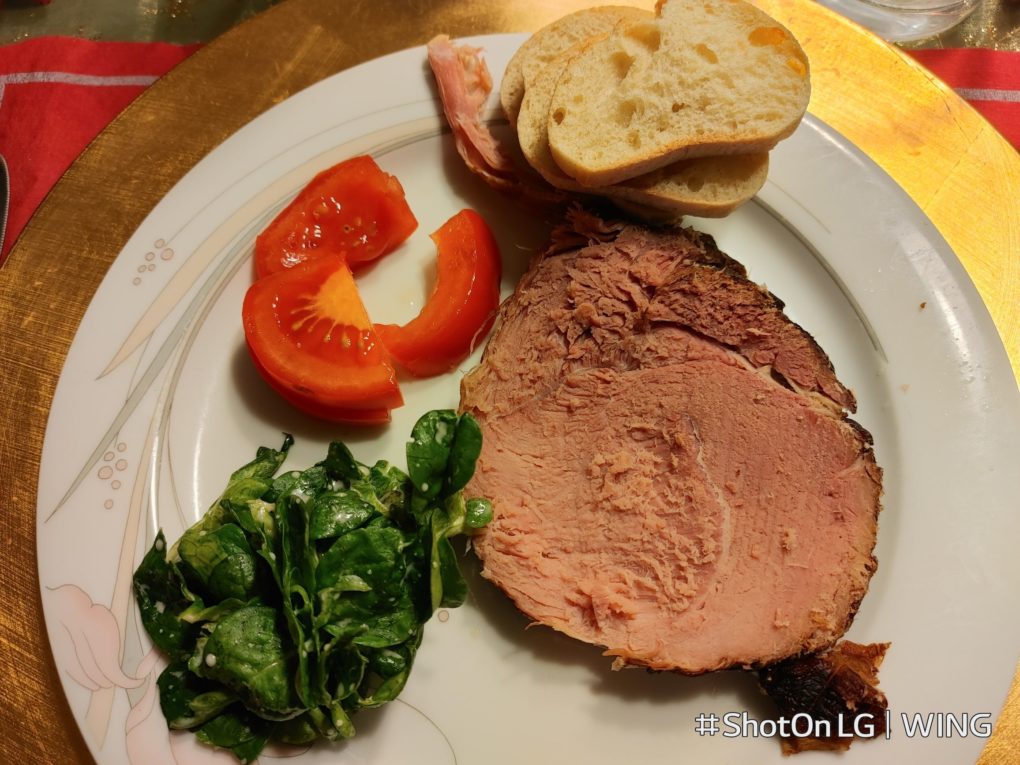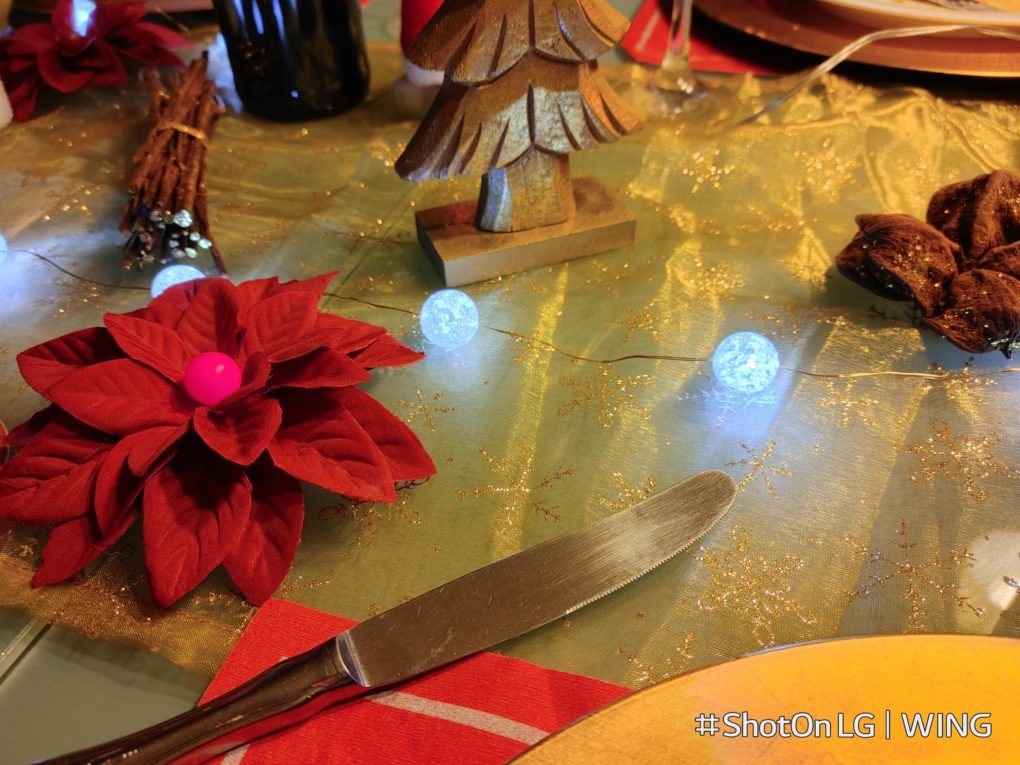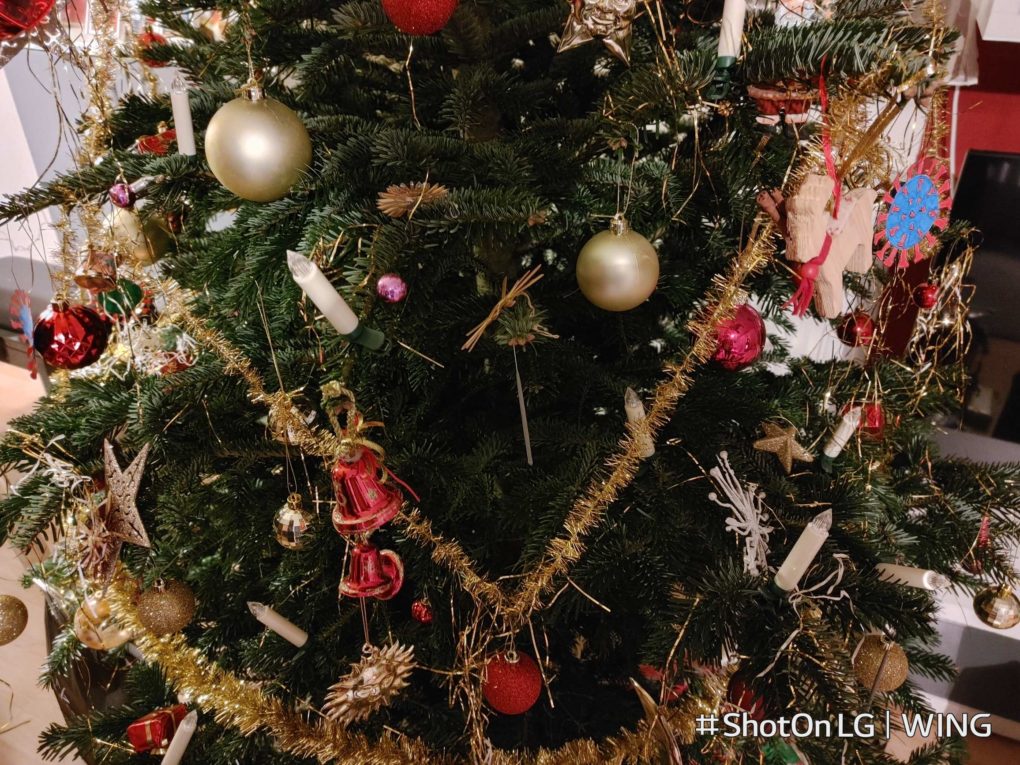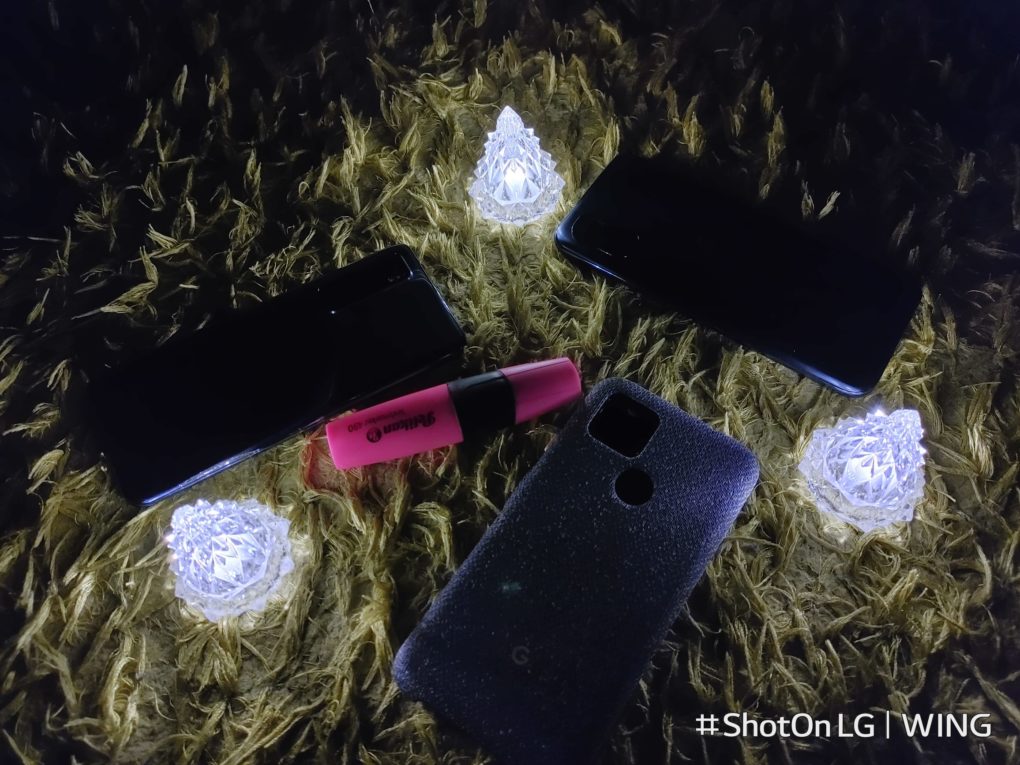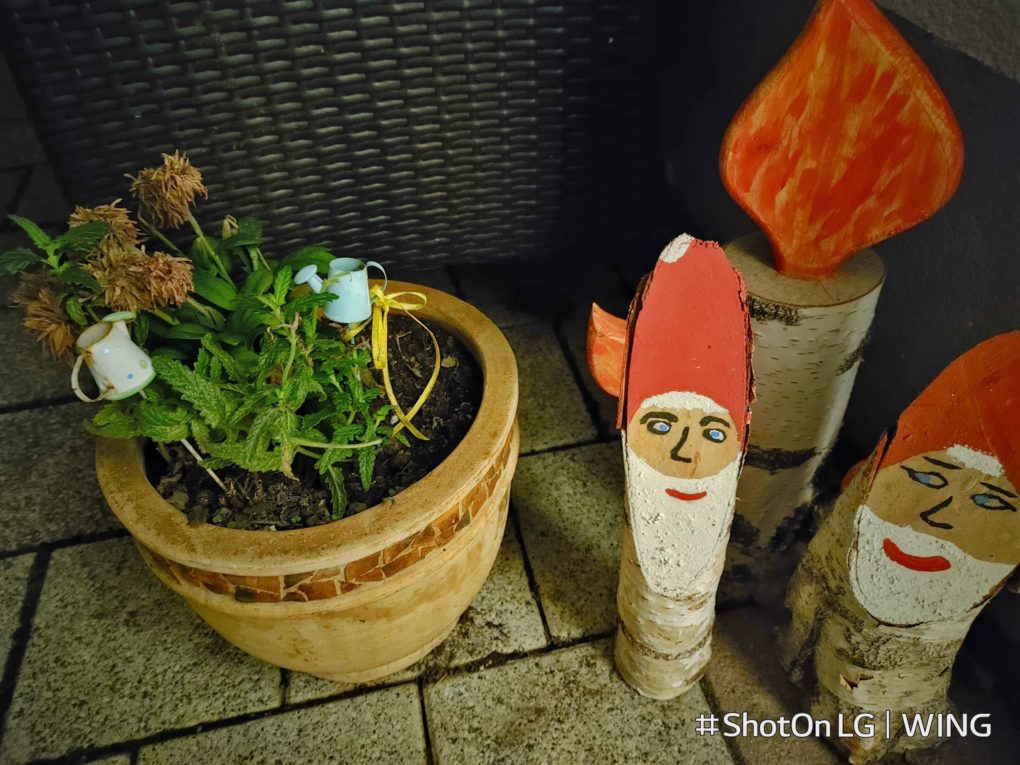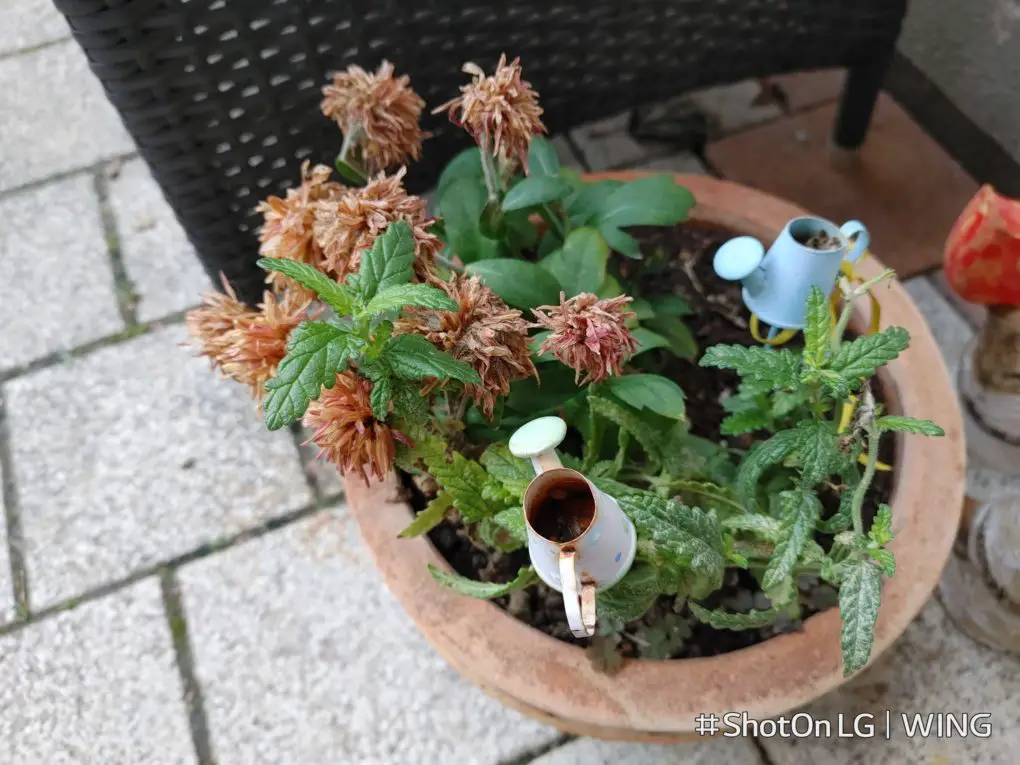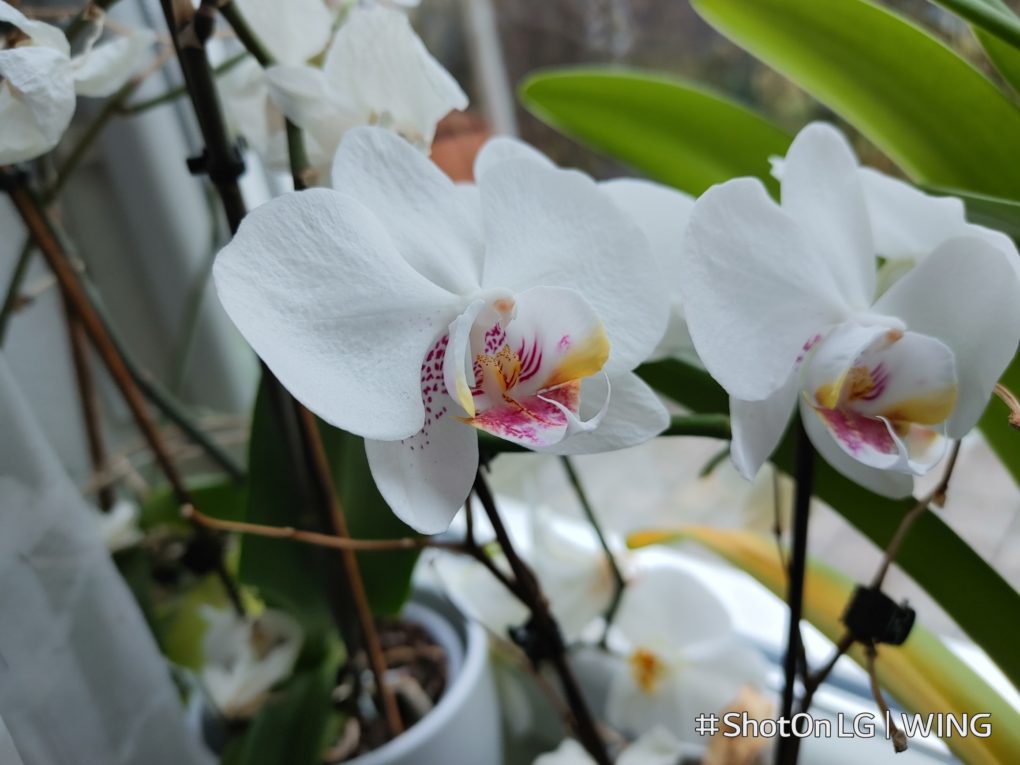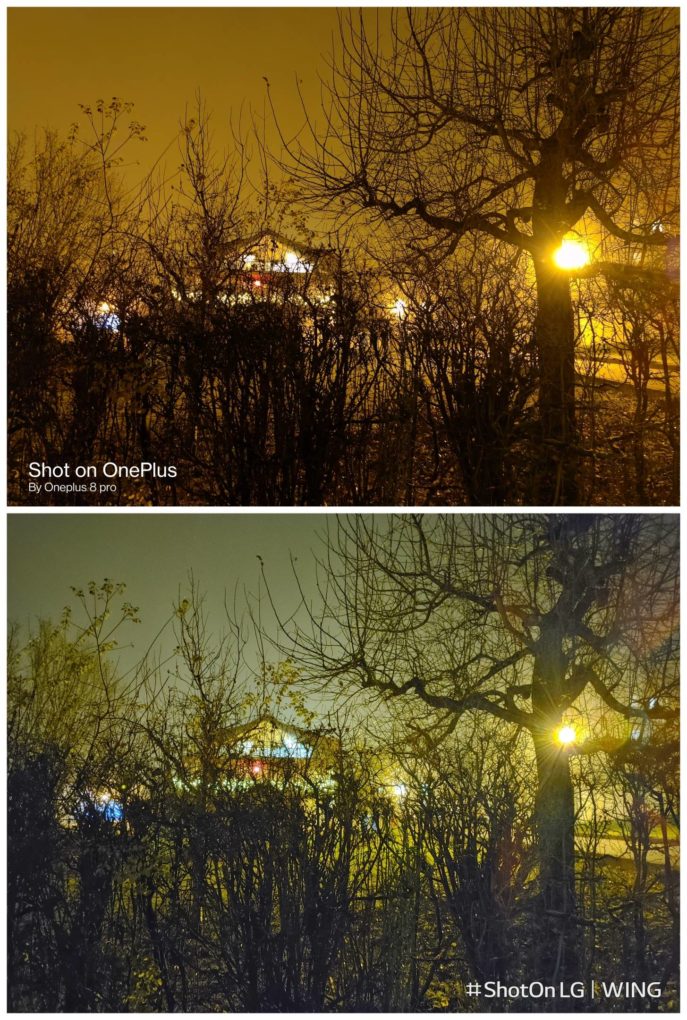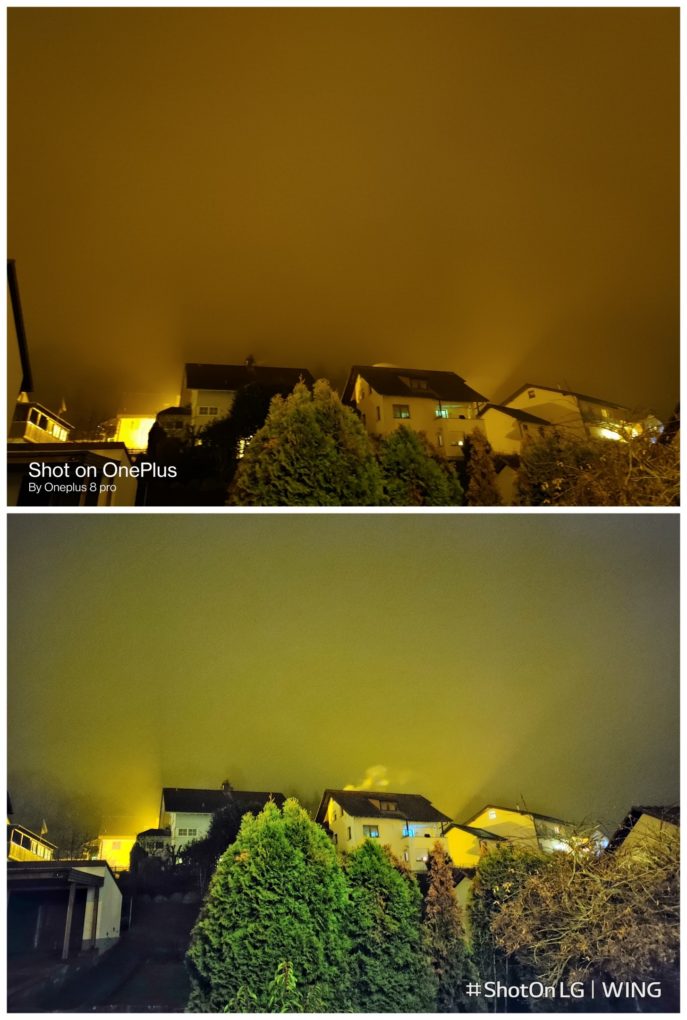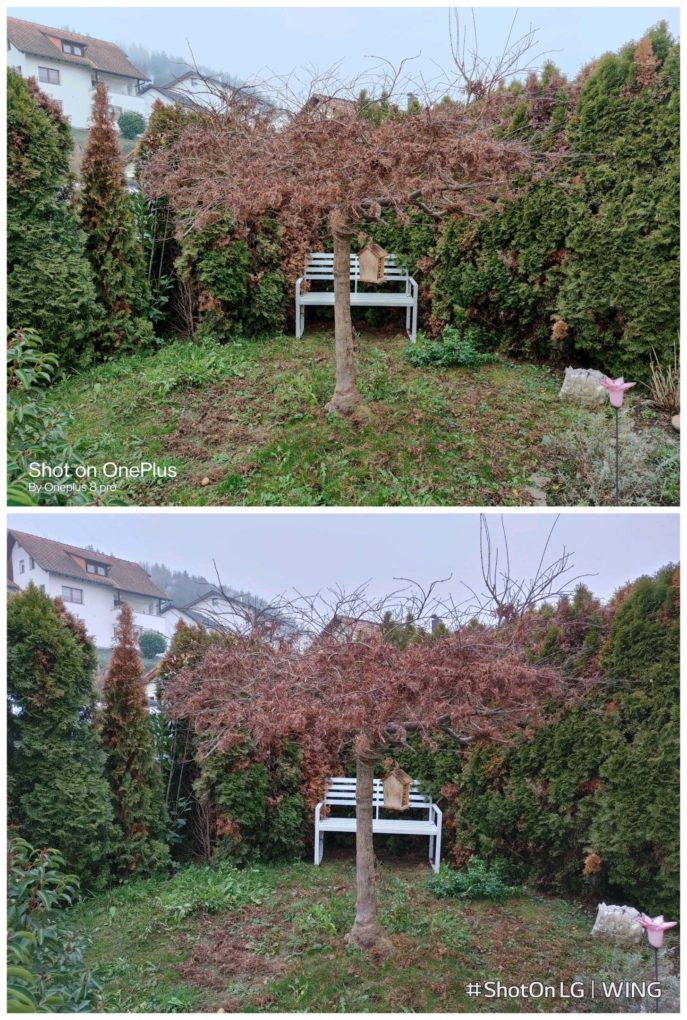LG Wing review: A new form factor for 1.099 euros
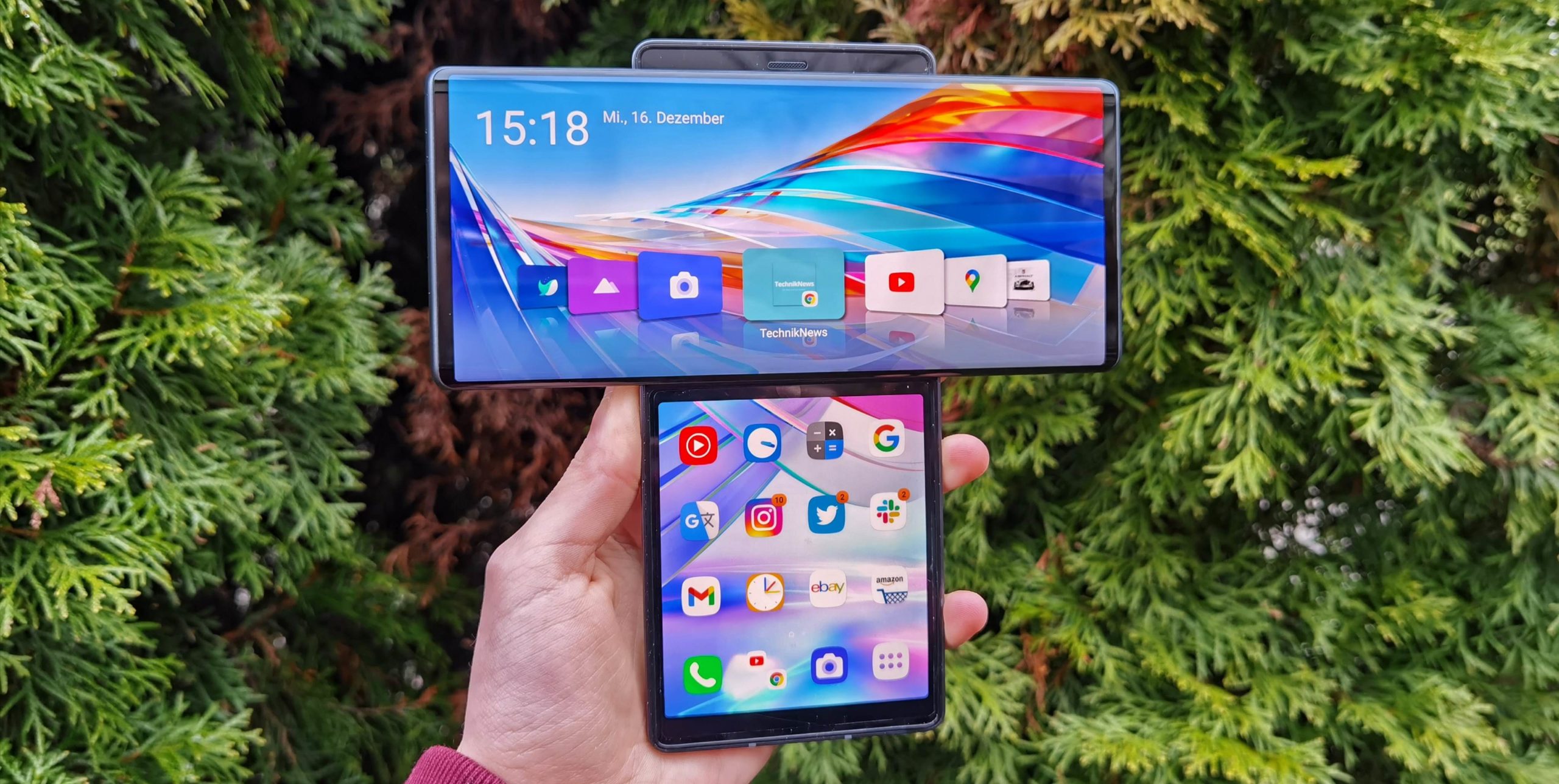
In 2020 we already saw some interesting smartphones with new concepts, such as foldable smartphones from Samsung, Huawei and Motorola, but also the Mi Mix Alpha with all-round screen. One thing, the LG Wing, is still missing, and that's exactly what we want to take a closer look at in the following lines.
This is the first smartphone that has a display that can be rotated by 90 degrees and a second, smaller one underneath. But the whole thing also has its price of a proud 1.099 euros. Whether this is justified and what advantages this new form factor offers in everyday life can now be found in this review.
Jump to section
Haptics, design and processing
With an impressive weight of 260 grams, the LG Wing is definitely one of the heaviest smartphones and the dimensions of 169,50 x 74,50 x 10,90 mm are tough too. I had never held such a thick and heavy smartphone in my hand before. As a result, I can't use the wing too well with one hand and in the long run you will notice the enormous weight. I would recommend anyone interested in this device to pick it up before buying, as the size and weight should put off many.
- The LG Wing is very thick. (Image: TechnikNews)
- LG has placed the pop-up camera on the top. (Image: TechnikNews)
- The display is slightly curved on both sides. (Image: TechnikNews)
But there is also a reason for this, because the wing has, as the name suggests, a rotating main display and a second one below. Of course, everything needs its place. There is also a pop-up front camera, which also takes up a lot of space.
Both the back and the front are made of glass and the frame is made of aluminum. While the latter is matte, unfortunately only glossy glass is used on the back in the gray that was tested with. As a result, fingerprints are almost magically attracted and scratches are likely to be more noticeable than with matt glass. The smartphone is also available in a white and blue color that should be matt. In conclusion, I can say that I really like the design of the LG Wing, which is partly due to the clean front and the beautiful, minimalist camera design.
There is absolutely no reason to criticize the workmanship. The device makes a very stable impression, the rotating mechanism works great, the buttons are bombproof and because of that I don't worry about the longevity of the rotating mechanism.
- The front looks very chic and clean. (Image: TechnikNews)
- The LG Wing in T mode. (Image: TechnikNews)
- The back could be used as a mirror in the color gray. (Image: TechnikNews)
Two displays - slight differences in quality
The main screen of the LG Wing measures 6,8 inches and only has a resolution of 2.460 x 1.080 pixels. That's okay and in everyday life you can usually never see individual pixels, but for a price of 1.099 euros you can expect more. The South Korean manufacturer relies on a POLED panel, which is nothing more than an OLED panel in which plastic instead of glass serves as protection.
Typical OLED colors are impressive with beautiful, strong colors without appearing too unrealistic. The black level is excellent and the white level is also impressive, although this is not entirely due to that OnePlus 8 Pro approaches. On top of that, the colors remain relatively stable in extreme viewing angles and there is no bluish cast. I was positively surprised by the maximum brightness, which can definitely keep up with other top smartphones in this price range. I never had, even on sunny days Proproblems with readability. Unfortunately, despite the high price, there is no smooth refresh rate of 90 or even 120 Hertz. For me completely incomprehensible and clouds the actually really good quality of the panel.
If you turn the main display 90 degrees, the second display comes into play. This has a resolution of 1.240 x 1.080 pixels, measures 3,9 inches and the special thing here is the unusual aspect ratio of 1,15: 1. Instead of POLED, the manufacturer relies on a classic glass OLED. In principle, the quality of the panel is convincing, even if the main screen is a bit better, especially in terms of brightness and viewing angle stability.
The T mode
LG has come up with a lot for the two displays. For example, in the so-called T mode, in which both screens are used, there are some camera functions, multitasking with several functions and that's exactly what we want to take a closer look at:
Gimbal mode
On the one hand, there is the gimbal mode in the in-house camera app. This enables the user to take stable and blur-free recordings, just like with a camera gimbal. A very well implemented feature, which can be especially exciting for creative content creators. While the main display serves exclusively as a viewfinder, some virtual buttons are displayed on the lower display, such as a joystick with which the image section can be moved like a real gimbal. To the left, the user will find various modes, such as the pan mode or the pan-tilt mode, with which the image section can be moved in different ways. So much for theory, but does it really work in everyday life? Yes it does, the quality of the videos and photos could be a little better (more later), but the whole thing is really well implemented and videos are played back nicely and stably.
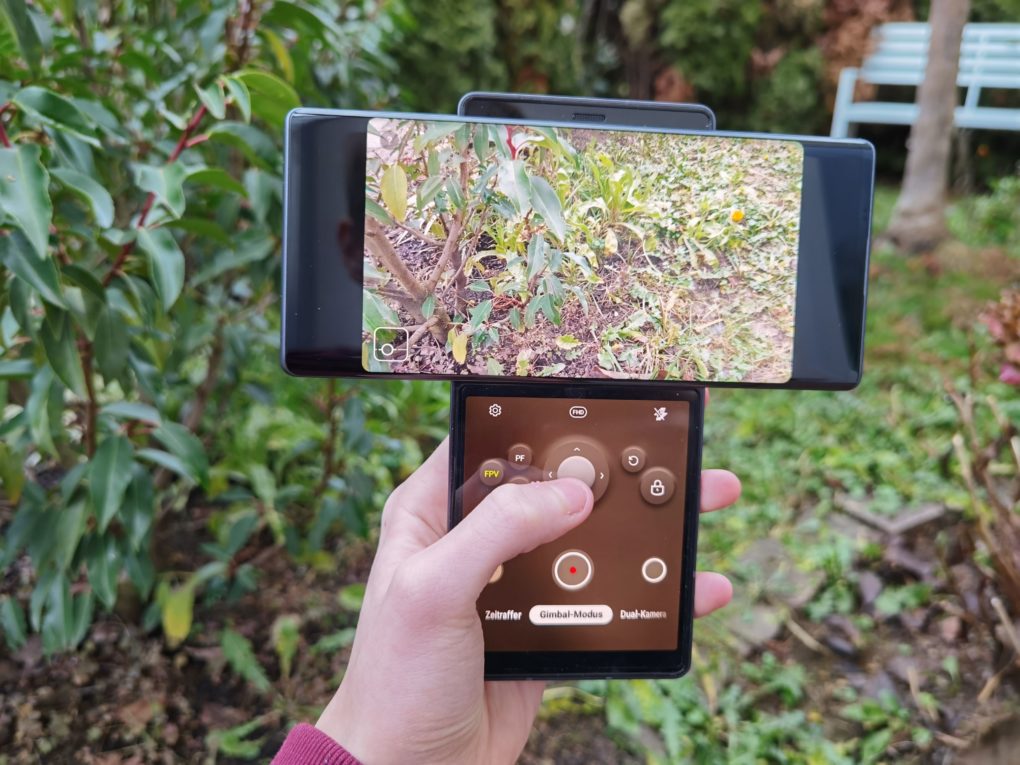
The image section can be changed with a virtual joystick on the second display. (Image: TechnikNews)
Dual recording function
As the name suggests, the front and rear cameras record a video at the same time. The user can view the recordings side by side, as picture in picture or on the split screen as two separate videos. In this mode, the resolution is unfortunately limited to Full HD.
Slow motion and time lapse
The time-lapse control detects what you are recording and accelerates at the ideal speed. Videos in 4K are even possible here and there is a special mode for time lapse at night. Slow-motion recordings are also possible without any blurring and the user can select a specific area here in which only part of the video is slowed down.
- Here you have the option to slow down only part of the video. (Screenshot: TechnikNews)
- There are some functions here to record a time lapse. You can even zoom in on the video while recording. (Screenshot: TechnikNews)
Outsourced mode
Of course, both displays are also useful outside of the camera. In outsourced mode, additional control elements are shown on the second display, which can be extremely useful and I actually used it very often in everyday life. For example, if you watch a video on YouTube, various elements are displayed on the lower display, with which you can pause the video or adjust the brightness, among other things. This is definitely very practical, but I would have liked a little more options, such as changing the quality of the video or writing a comment. Another example of this mode is the popular game Asphalt 9, where the route can be displayed on the small screen. This is a very useful feature for gamers of this game, but unfortunately no other games have been found for this mode yet. The developers need a little more time and then several apps and games will be adapted for this mode.
If an app can be extended to the second screen, this is indicated by a corresponding button.
- If you watch a video on YouTube in T mode, the most important elements are shown on the small display. For example, the brightness or the volume can be changed. (Image: TechnikNews)
- Asphalt 9 gamers really get their money's worth here. The route is displayed on the additional screen. (Image: TechnikNews)
Parallel mode
Conventional multitasking is of course also possible and is a lot of fun, especially on the LG Wing. So I very often watched a video on YouTube on the main screen and surfed the Internet on the second display or quickly opened my Twitter feed.
- In everyday life, I very often watched a video on YouTube and surfed the Internet or opened my Twitter feed. (Image: TechnikNews)
- Navigate and listen to music at the same time - a very practical function when driving a car. (Image: TechnikNews)
- That is also possible. There are really countless possibilities. (Image: TechnikNews)
Software
LG's in-house user interface, based on Android 10, is used as the software. An update to the latest Android version should follow soon, but I would have wished for Android 11 from the factory, which you definitely have to expect for over 1.000 euros.
I actually liked the in-house user interface relatively well. It's a bit too colorful and overloaded for my taste in some places, but that's still okay. LG integrates an excellent night mode, excellent gesture control and a very good always-on display, which shows the date and time, among other things. Furthermore, there is of course an app drawer that is extremely reminiscent of Samsung's OneUI and some additional functions in the settings, where you can change the animation when unlocking via the fingerprint sensor, for example.
Performance
At the latest when installed Prozessor, it becomes clear that the LG Wing is more of an upper mid-range smartphone. Under the hood is the Qualcomm Snapdragon 765G octa-coreProprocessor, which is supported by 8 GB of RAM and 128 GB of internal memory. The latter can be expanded to up to 2 TB using a micro SD card.
The performance could not really convince me in everyday use, because there were repeatedly stutters and delays, which was particularly noticeable when switching between T mode (both displays in use) and normal mode (main display in use). Don't get me wrong, in principle the performance is okay, but for a Snapdragon 765G and especially for the price, I would have expected more. The much cheaper one Google Pixel 4a 5G runs with the same Proprocessor a little better.
Battery
The battery has an average capacity of 4.000 mAh and easily lasts at least a day. Some should certainly manage 1,5 days and if you are extremely cautious, 2 days are not Proproblem In my everyday use, I managed a screen-on-time of about 8 hours and when only using the WLAN, up to 10 hours were usually not Proproblem Overall I was happy here.
- Screenshot: TechnikNews
- Screenshot: TechnikNews
- Screenshot: TechnikNews
- Screenshot: TechnikNews
- Screenshot: TechnikNews
The LG Wing supports Quick Charge 3.0 with up to 25 watts, which means that the device can be fully recharged in under two hours using the included power supply. Wireless charging with up to 12 watts is also possible.
Camera
In the LG Velvet the manufacturer was praised for the very simple and beautiful camera design. With the Wing, however, LG decided to adapt the camera layout to the general public by placing three sensors, a lettering and a flash in a rectangle. It is very reminiscent of the current iPhones or the coming one OnePlus 9, but personally I like it extremely well. Well, it doesn't really matter, because it depends on the inner values: At the top is a 12 megapixel gimbal camera, underneath a 64 megapixel main camera and at the bottom a 13 megapixel ultra-wide-angle camera. The resolution of the already mentioned pop-up selfie camera is 32 megapixels.
- The triple camera of the LG Wing. (Image: TechnikNews)
- The cameras protrude a long way from the housing. (Image: TechnikNews)
- The 32 megapixel pop-up selfie camera. (Image: TechnikNews)
First, let's take a look at the quality of the main camera. The images are nice and sharp and convince with a very good dynamic range, although there is sometimes a lack of contrast and saturation, but that is still within limits. If the lighting conditions get worse, the Wing convinces with a very good white balance, good sharpness and solid brightness. With other smartphones, such as the Huawei P40 Pro+ or I live X51 5G the pictures get a little brighter and better overall, but you can live with that. In conclusion, I can say that I generally liked the main camera very much, even if there was still some room for improvement for 1.099 euros.
With the ultra-wide-angle camera, you can take beautiful pictures with good sharpness, solid dynamic range and good colors when there is enough light. However, the tide turns when the lighting conditions dwindle. The recordings become too dark, too blurry and quickly start to rustle. That can definitely be done a little better.
The gimbal camera should really only be used in good light conditions, because as soon as it gets just a little darker, the recordings are practically useless. In the end, I ask myself why LG did not install a telephoto lens on a smartphone for over 1.000 euros. In this price range, almost all of the competition is significantly ahead, even cheaper smartphones, such as the regular Huawei P40 or the Vivo X51 5G, which offers a 5x optical zoom.
Test photos of the LG Wing
Let's take a look at a few test photos. The following images are absolutely unedited, but have been compressed losslessly in order to keep the loading times and memory consumption of the website low.
- Very good picture, which could maybe be a little sharper. (Image: TechnikNews)
- Nice colors and good sharpness. PS: It was very tasty. (Image: TechnikNews)
- I have nothing to complain about here. (Image: TechnikNews)
- The photo could perhaps be reproduced a little more saturated. (Image: TechnikNews)
- A little too dark and too colorless. (Image: TechnikNews)
- Night mode often brings visible improvements. (Image: TechnikNews)
- Good sharpness and nice bokeh. (Image: TechnikNews)
- A little too cool, but otherwise a great picture. (Image: TechnikNews)
Comparison with the OnePlus 8 Pro
Let's compare the camera to the OnePlus 8 in different situations Pro:
- With the ultra wide-angle camera of the OnePlus 8 Pro the visibly better shots succeed in low light. (Picture: TechnikNews)
- Big differences in white balance, hardly any differences in sharpness. (Image: TechnikNews)
- The LG Wing takes the slightly better picture with a much more accurate white balance. (Image: TechnikNews)
- The LG Wing makes the color better and sharper, the 8th Pro the less noisy image. (Picture: TechnikNews)
- Slight differences in color rendering. (Image: TechnikNews)
- The OnePlus 8 Pro makes the much warmer and, in my opinion, the nicer picture. (Picture: TechnikNews)
It has become quite clear that both smartphones are on a similarly good level. The main cameras of both cell phones take really good, sharp pictures with a decent dynamic range, which sometimes only differ visibly in terms of color reproduction. As the light gets weaker and weaker, the LG Wing wins by a hair's breadth for me, but the difference isn't that big. There are slight differences in favor of the OnePlus 8 when it comes to the ultra wide-angle camera Pro, because the recordings are slightly sharper and the sensor captures significantly more light in low light.
Other
I would like to positively emphasize the built-in vibration motor, which feels good and pleasant, but could be a bit quieter for my taste. Other smartphones, such as the OnePlus 8 Pro, are a bit better, but I was still very satisfied here.
I was rather disappointed with the built-in loudspeaker. LG only uses a mono speaker here, which neither sounds particularly loud nor convincingly good. That can be done much better.
The wing can be unlocked with a fingerprint sensor in the display, which is easy to reach and works quite reliably. He could be a little faster, but that's really grumbling on a very high level.
Last but not least, I would like to mention that the LG Wing is unfortunately not officially protected against the ingress of water and dust according to IP-68. With this design, that shouldn't surprise anyone, but it's still a shame.
Conclusion
All in all, it's relatively difficult for me to sum up the LG Wing, because on the one hand I really enjoyed using it, but on the other hand a few things bothered me: First and foremost the RRP that was much too high , the missing 90 or 120 Hertz, isolated weaknesses in the cameras, but also the built-in one Processor, which in my opinion has no place in this price range.
As a result, I can hardly recommend the LG Wing to anyone for the price at the moment, unless you really want this new form factorprobeers or absolutely needs two displays for multitasking. If the price were to drop to around 800 euros, then you would be very happy to buy it and get a solid smartphone with unique multitasking functions. Otherwise, you have to say very clearly that most smartphones in this price range simply have a little more to offer in terms of hardware.
Still, I would like to praise LG for constantly trying to bring new innovations to market and I hope they stick to their line in the future. The LG Wing is definitely an exciting smartphone, but maybe they could have done a little more with the hardware.
We thank LG for providing the LG Wing!

